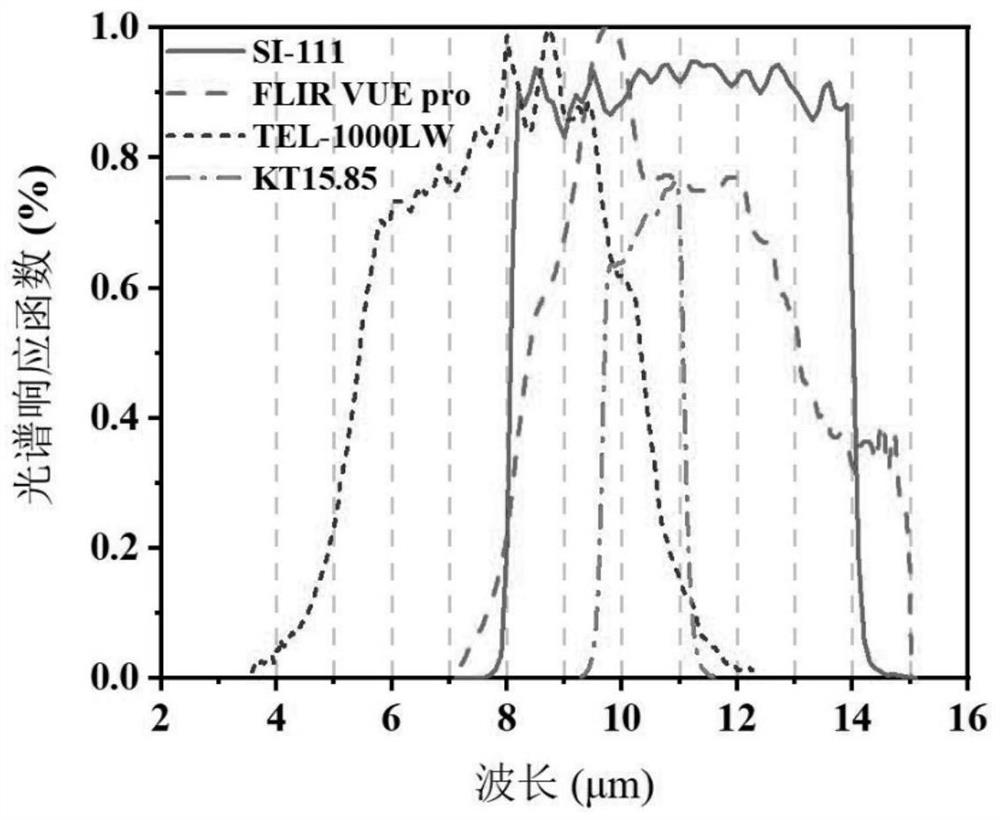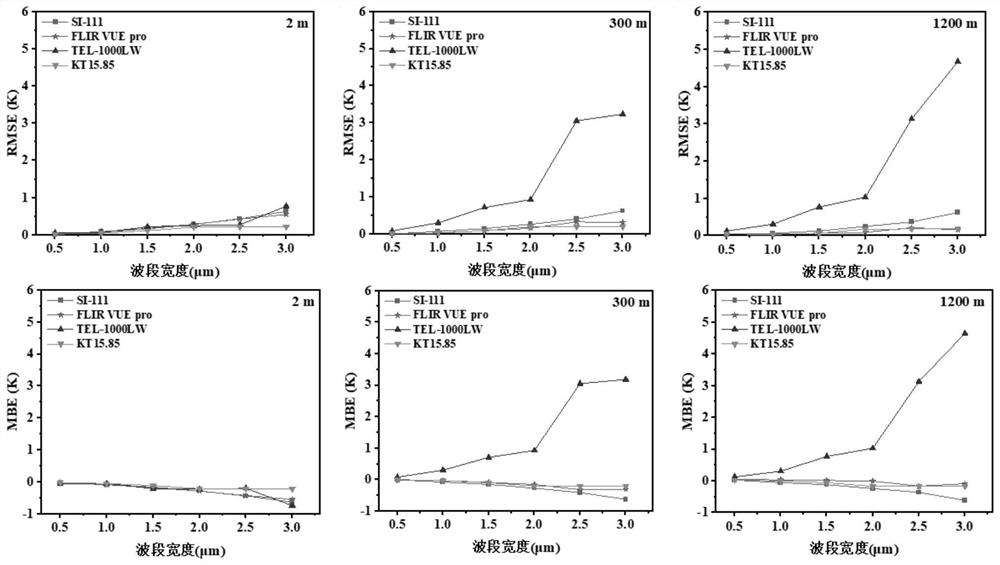Surface temperature inversion method for broadband thermal infrared sensor
A surface temperature and sensor technology, applied in the field of thermal infrared remote sensing, can solve the problems of a large number of simulation calculations, low accuracy of LST inversion, and high dependence on
- Summary
- Abstract
- Description
- Claims
- Application Information
AI Technical Summary
Problems solved by technology
Method used
Image
Examples
Embodiment
[0044] In this implementation example, four wide-band thermal infrared sensors, SI-111, FLIR VUE pro, KT15.85 and TEL1000LW, are selected, such as figure 1 shown. Using the measured atmospheric profile and surface emissivity to establish a simulated data set to analyze the performance and parameter sensitivity of the method, and then apply the method to the inversion of the surface temperature of the actual observation data, and compare the LST differences obtained by different sensors.
[0045] The processing flow in this example is:
[0046] Step 1: Segment the spectral response function of the sensor, with a step size of 0.5 μm, six division intervals from 0.5 μm to 3.0 μm.
[0047] Step 2: Input the spectral response function, measured atmospheric profile and surface emissivity obtained in step 1 into the MODTRAN 5.2 radiative transfer model for radiative transfer simulation. The range of surface temperature input during simulation is 283.15-343.15K, and the step size of...
PUM
 Login to View More
Login to View More Abstract
Description
Claims
Application Information
 Login to View More
Login to View More - R&D
- Intellectual Property
- Life Sciences
- Materials
- Tech Scout
- Unparalleled Data Quality
- Higher Quality Content
- 60% Fewer Hallucinations
Browse by: Latest US Patents, China's latest patents, Technical Efficacy Thesaurus, Application Domain, Technology Topic, Popular Technical Reports.
© 2025 PatSnap. All rights reserved.Legal|Privacy policy|Modern Slavery Act Transparency Statement|Sitemap|About US| Contact US: help@patsnap.com



